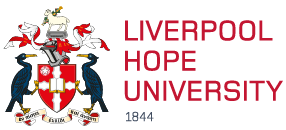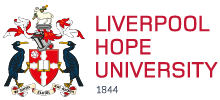MA Music student and electroacoustic composer Wendy Smith shared her d?s?l?ks?? ??e?twe? (dyslexia gateway) installation (2016) with the local community of Halton.
Wendy attended Halton Libraries’ Fun Palaces community event, which is part of a nationwide yearly campaign to share culture at the heart of every community. Fun Palaces is influenced by the Universal Declaration of Human Rights, which states that ‘everyone has the right freely to participate in the cultural life of the community, to enjoy the arts and to share in scientific advancement and its benefits’.
Halton Libraries aimed the event at local children aged between 3 - 13 years old, with 200 children participating at Halton Lea Library, 50 at Runcorn Library and 25 at Ditton Library.
At Halton Lea Library, Wendy shared digital music alongside flute lessons, oil painting and choir performances. The library’s literature and learning environment presented the perfect space to showcase her d?s?l?ks?? ??e?twe? installation. It highlights the dyslexic’s perspective, in particular the first hand account of the composer’s experience.
This was depicted when the children began typing their names on the laptop keyboards, as they became intrigued; as they experienced language live through both the audio and visual senses, which demonstrated the breaking up of individual sounds and letters to assemble language through audio and visual components.
Wendy said: “The transformation and processing of the vocal sounds highlighted the phonological difficulty dyslexics encounter, caused by having difficulty connecting sounds to symbols and sounding out words, which leads to spelling mistakes and misreading. The breadth of vocal sounds and visual coloured letters highlighted the busy nature of a dyslexic’s mind, emulating the various voices that occur when interpreting visual and auditory language.
“D?s?l?ks?? ??e?twe? made children and their guardians more aware of this common learning difference, dyslexia. This opportunity opened up the possibilities for explaining and immersing children in the language and sound variations dyslexic’s experience, as both audio and visual illustration highlighted the different processing strengths and channels of the dyslexic.”
The children gained a comprehension into the processing differences dyslexics encounter through their tactile typing motion, as it shed light on how dyslexics break up language to read and spell words through patterns and sequences. Additionally, the interaction aspect of the installation was designed to ensure the response was individualised, by giving participants control over the musical output through typing, empowering them to develop their own musical compositions.
By enabling the children to type their own name on the computer keyboard, the children were personally invested in the interaction. Furthermore, this work provided the opportunity to interact with the local Halton community, sharing the composers’ personal experience through music and imagery. It also opened up the possibilities of using practice-based research conducted via Hope’s MA Music course to make an impact within a local community.



